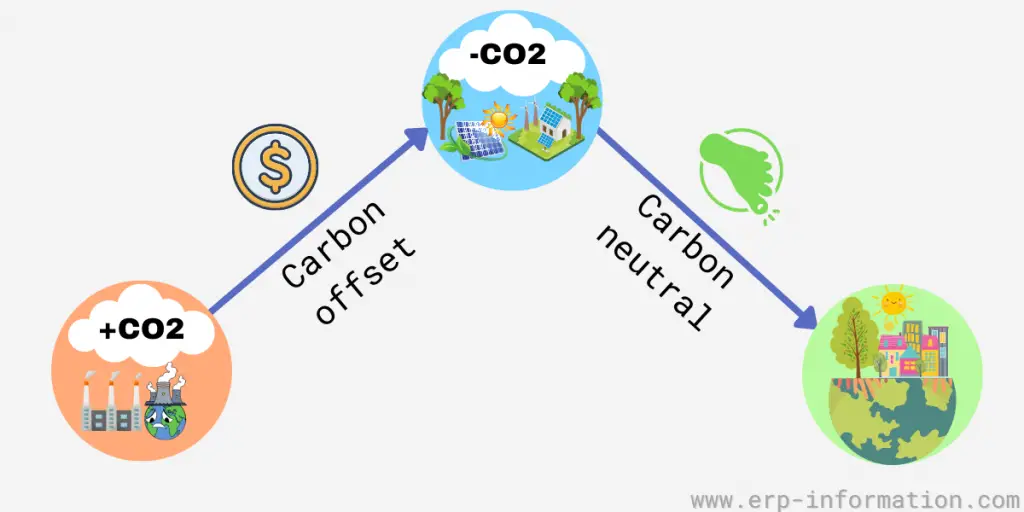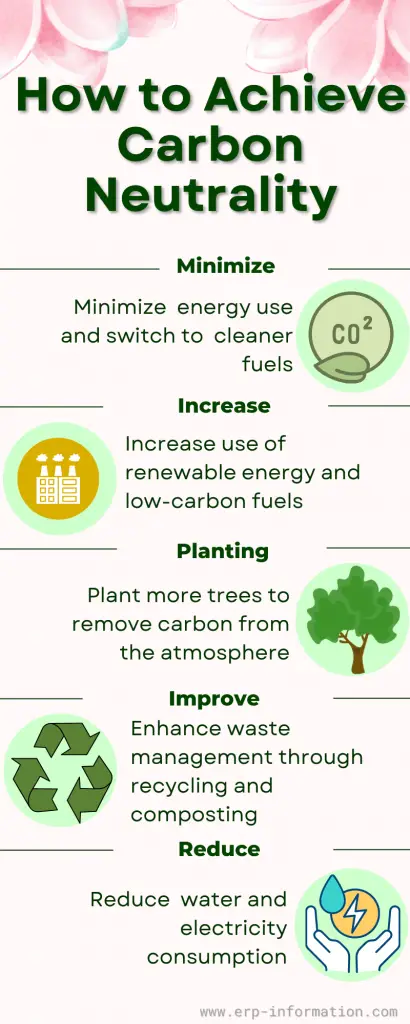Much has been said about the requirements for businesses to become more environmentally responsible, and achieving carbon neutrality is a key goal for many corporations.
But what about technology companies? Can they become carbon neutral, and if so, how do they go about it?
This post will explore some of the options available to technology companies seeking to achieve carbon neutrality.
This blog post will look into the definition of Achieving Carbon Neutrality, carbon neutrality in technology companies, examples, its importance, and ways to achieve carbon neutrality.
Evaluate carbon emissions using our Carbon Emission Calculator
What is carbon neutrality?
It neutralizes the amount of CO2 released into the atmosphere so that it doesn’t contribute to climate change.
Carbon neutrality occurs when the net emissions of greenhouse gases from a person, organization, product, or event are equal to zero.
What is carbon neutrality in technology companies?
Carbon neutrality in technology companies refers to the goal of reducing or eliminating emissions from company operations so that the company’s net impact on climate change is zero.
Achieving carbon neutrality examples
Apple and Google are carbon-neutral companies. They have achieved this by investing in renewable energy projects like solar and wind farms. In addition, they offset emissions from their offices and data centers by purchasing carbon credits. Google has also committed to offsetting emissions from its global operations by 2025.
Climeworks has developed a technology that can extract CO2 from the air and sell it to enterprises that want to reduce their emissions. That is just one example of how businesses and individuals can work together to reduce greenhouse gas emissions and achieve carbon neutrality.
Why is carbon neutrality important in technology companies?
There are several reasons why Achieving Carbon Neutrality is important.
- First, it can help to reduce the number of greenhouse gases in the atmosphere and slow the effects of climate change.
- Second, it can show that businesses are taking their environmental responsibilities seriously.
- Finally, it can help to build customer confidence and trust.
Ways to achieve carbon neutrality
Technology companies can achieve carbon neutrality by reducing emissions from their operations.
This can be done in two ways: through carbon offsets or by reducing emissions to zero.
Carbon offsets are a way to pay someone else to reduce carbon emissions on your behalf. For example, you can buy carbon offsets from a company that plants trees.
That means that the company will not cut down any more trees than they already have and will plant new trees to offset the amount of carbon dioxide you have emitted.
Reducing emissions to zero is another way to achieve carbon neutrality. That can be done through energy conservation measures or switching to renewable energy sources.
For example, you could install solar panels on your home or business to offset the emissions from your electricity use.
Some of the most common methods include reducing energy consumption, switching to renewable energy sources, and planting trees or other vegetation that can sequester CO2 from the atmosphere.
Carbon neutrality vs Net zero
| Carbon neutrality | Net zero |
| Typically refers to businesses or organizations. | While Net-zero can apply to any entity. |
| While carbon neutrality only looks at direct emissions. | Considers greenhouse gases from all sources. |
Click here for more details about carbon neutrality vs net zero.
FAQ
Which is the first carbon-neutral country?
The first carbon-neutral country is the Federated States of Micronesia. The country has pledged to become carbon neutral by 2100.
How is carbon footprint measured?
There are many ways to measure carbon footprints. One common method is calculating the amount of greenhouse gas emissions produced by an individual, business, or country. Another approach is to look at the total amount of carbon dioxide absorbed by forests and other vegetation.
What is carbon neutrality certification?
Carbon neutrality certification verifies that an individual or organization has taken steps to offset their emissions. Several certificates are available, and the requirements vary depending on the program.
Conclusion
Technology companies have a big role in minimizing greenhouse gas emissions and achieving carbon neutrality. However, there are many ways to achieve carbon neutrality, including reducing emissions, offsetting emissions, and switching to renewable energy sources.
Carbon neutrality is important for several reasons, including slowing the effects of climate change, demonstrating corporate responsibility, and building customer trust.


